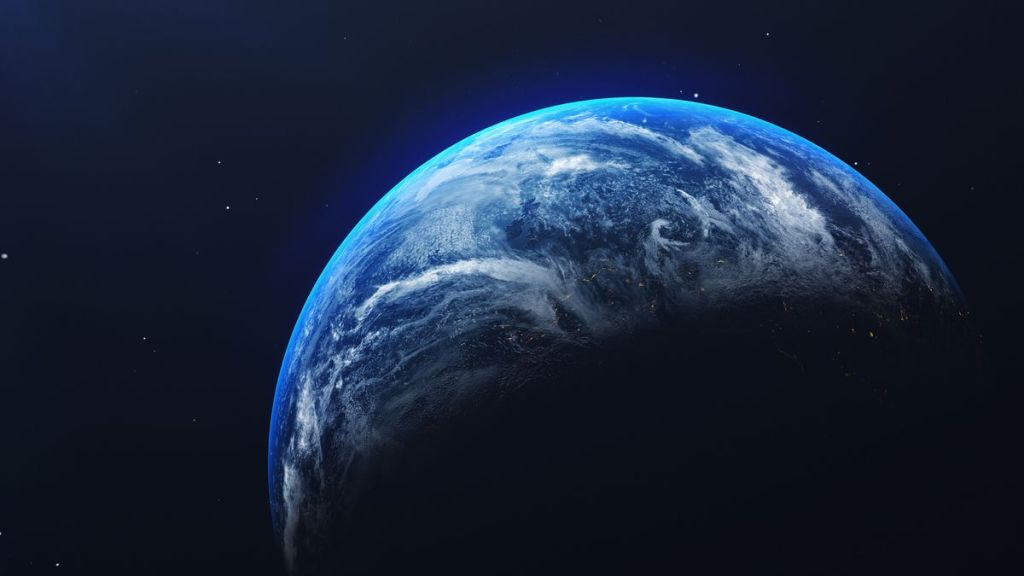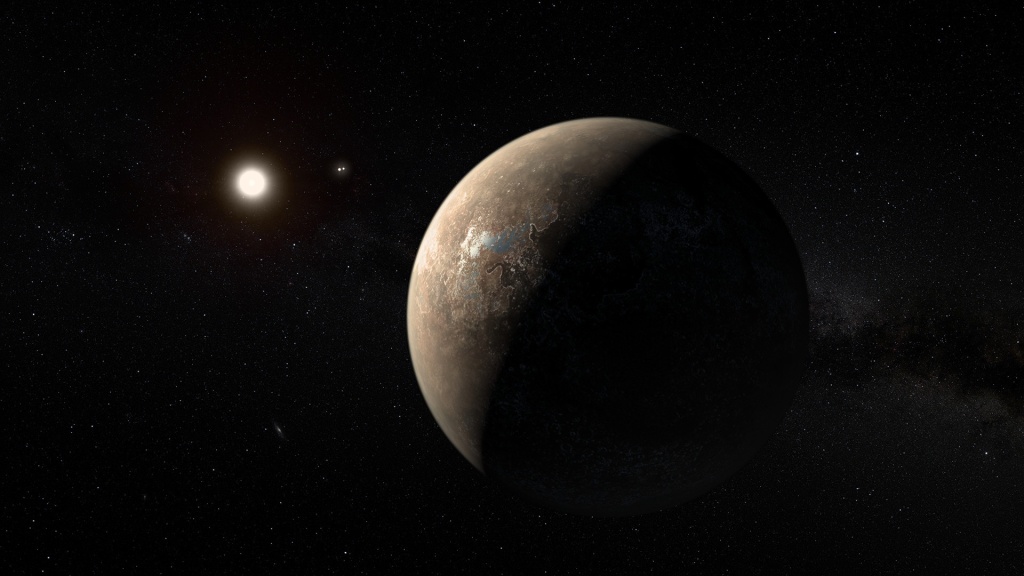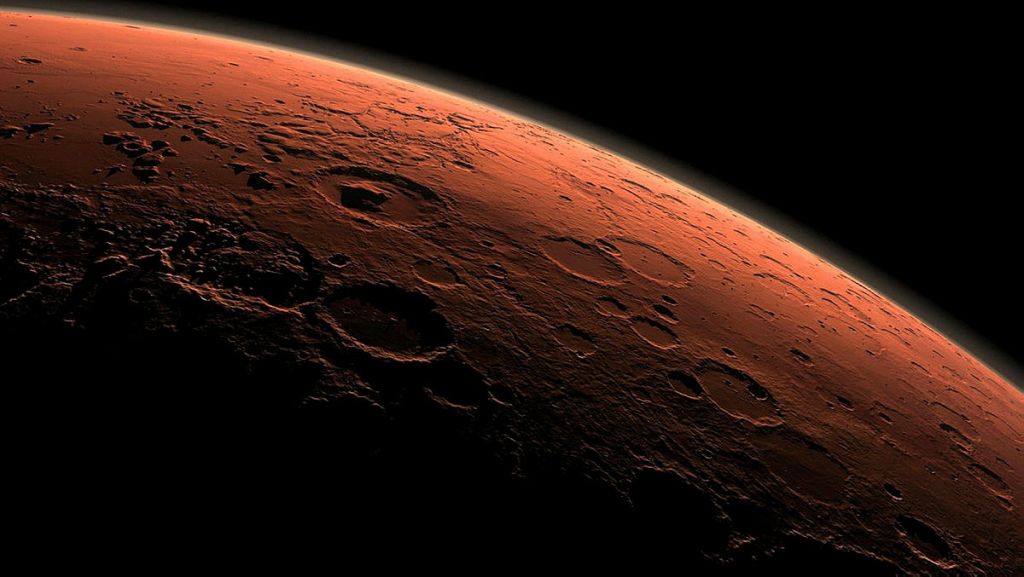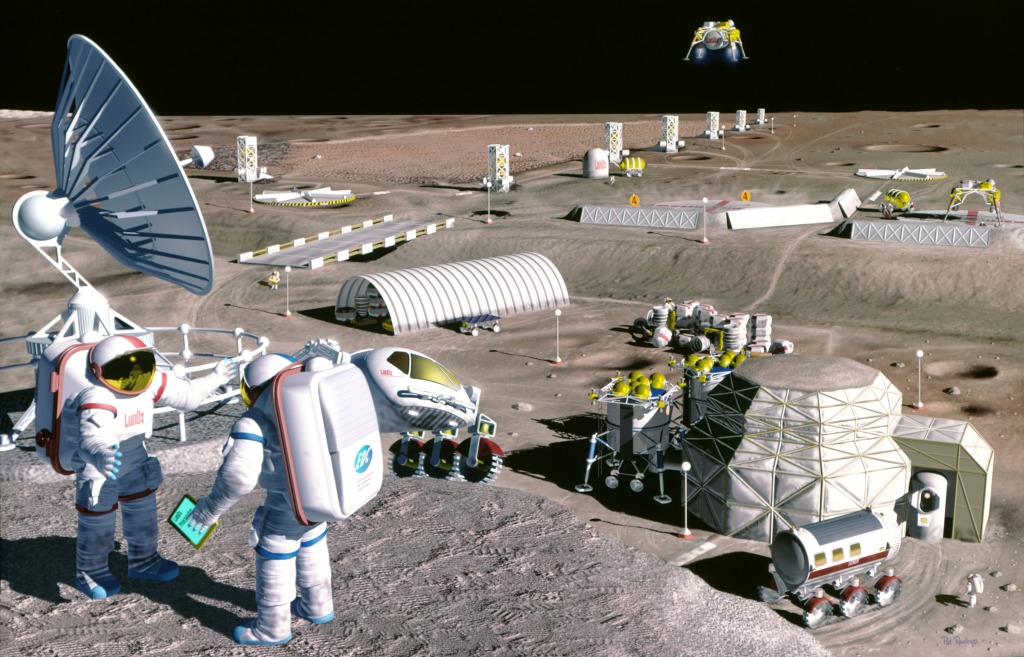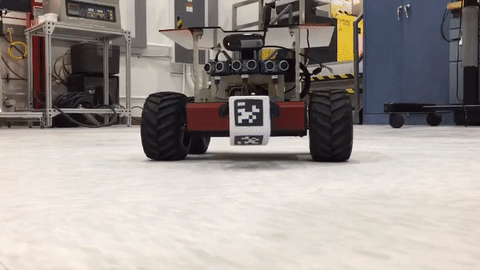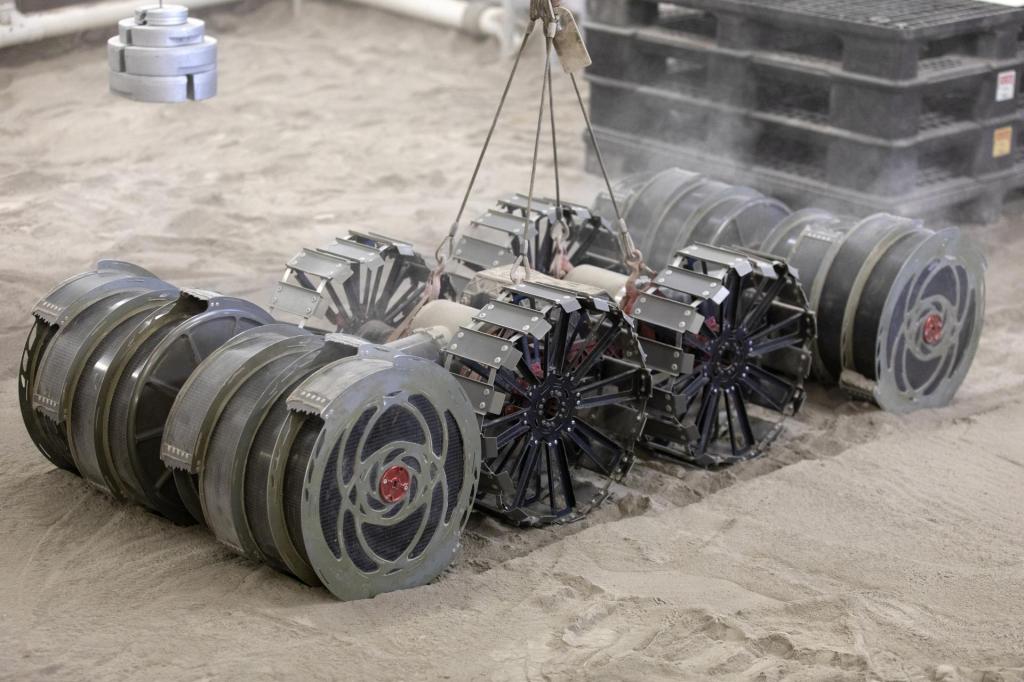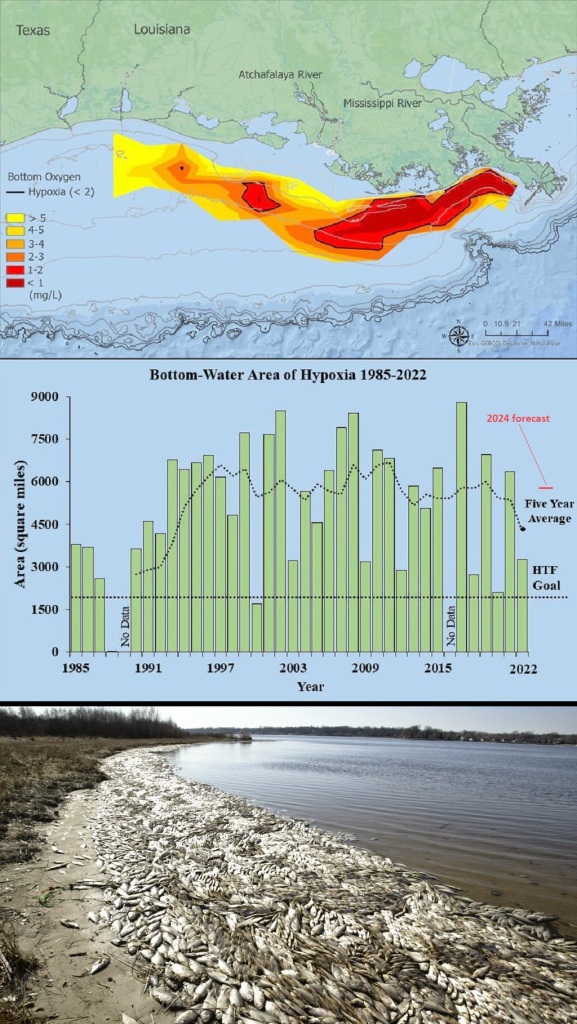Earth.
She has been our only home for well over 250,000+ years. Life and living organisms, however, have been on Earth the last 3.7 billion years, as microbes. But the history of living organisms on our planet has never been a guarantee, nor has it been perpetual.
Texas is experiencing record breaking triple digit temperatures never before seen in June. And traditionally the months of July and August are intolerably sweltering, even life-threatening if outside too long. Also, it is well documented how UNreliable our Texas electric grid is during extreme temps. Very little has changed since February 2021 when we lost our entire power grid statewide.
On a global scale there have been five mass extinction events during Earth’s 4.54 billion year history. The most catastrophic extinction to date, 250 million years ago, wiped out 96% of marine life and 70% of land species. It would be millions of years for these lifeforms to recover.

Is there a sixth extinction event happening now? Most scientists around the globe say yes, absolutely. I must agree with them. All five of these past extinction events were not triggered or caused by any living species on Earth. They were the consequence of terrestrial and cosmic forces, very rare and random occurrences. The current sixth extinction event, however, is intentionally self-inflicted.
Not to make light of our dire predicament, but one must admit that the 21st-century human race is no different than the fat, arrogantly smirking, boiling frog in the sauce pan. For the last 50-years we were warned repeatedly over and over and over again by expert scientists that this extinction event would indeed happen if we did not diminish then rid ourselves of fossil fuel addiction. It might now be too late to save ourselves from ourselves, save our ecosystems, our animal kingdoms, and our one and only home we have ever known.
What must be done… right away, immediately, with much haste?
∼ ∼ ∼ § ∼ ∼ ∼
The National Oceanic and Atmospheric Administration (NOAA) published a report in April 2023 stating that three key gases—carbon dioxide, methane, and nitrous oxide—which contribute to dangerous Greenhouse effects rose sharply in 2022 to levels never before seen or ever recorded.
“The observations collected by NOAA scientists in 2022 show that greenhouse gas emissions continue to rise at an alarming pace and will persist in the atmosphere for thousands of years,” said Rick Spinrad, Ph.D., NOAA administrator. “The time is now to address greenhouse gas pollution and to lower human-caused emissions as we continue to build toward a Climate-Ready Nation.”
The same warnings and alarms were announced as far back as the 1970’s and into the early ’80s that human industrial activity, mining, drilling, and pollution was a one-way ticket to extinction of species on the planet if not all living species. Now, almost five decades later very little, if anything, has changed with human activity and consumption. In fact, the data from NOAA shows it’s worse, much worse.

Because of the factual apologue earlier of the boiling frog, the human race must do everything possible to find another home planet. It is our only hope, if we want to save our species and some of the animal kingdom. We’ve destroyed and ignorantly neglected far too much, for far too long, toward saving this planet. It is over. We waited too long, too stupidly to do anything significant to change Earth’s demise. It’s time to get off our asses and take drastic measures, worldwide.
What has to be done, now?
Because science and her expert scientists always ask What if… what is possible? What isn’t possible, now? we do have answers to save ourselves, or at least some humans and some animals and plants. It is only a matter of applying our intelligence and ingenuity and totally abandon Bronze Age religious myths and tales of self-fulfilling prophecies of Armageddon or the End Times. Hah! Right. 🙄🤦♂️ Another boiling frog.
Every single day astrophysicists and cosmologists with NASA and the European Space Agency are locating numerous exoplanets for humans to colonize. The nearest habitable planet within a goldilocks zone—i.e. a planet that orbits a star/sun within an ideal distance to possess H2O and an atmosphere of oxygen and nitrogen protected from solar radiation—is 4.2 light years from Earth. That is 4.514 trillion miles away. A very, very long distance away. Easily more than two or three lifetimes away. It is called Proxima Centauri b.
Needless to say, if humans are to colonize an interstellar exoplanet, we must deal with its atmosphere, whatever it may consist of or not, and grow plants, trees, and animals necessary to sustain human life. Today, humanity has no other choices. It must be done and done immediately. It might still be too late. But we MUST act right now!
So… where would we go? Proxima B is the best destination right now. And there are a few other exoplanets to target. But they are further away than 4.2 light years. A staggering 25-trillion miles away (rough average) is no simple trip for a few hundred or thousands of human astronauts/cosmonauts and colonists. Planets within our own solar system are not ideal for human/animal habitation. They are extreme to say the least; nightmares actually.
Mars is perhaps a good “launching point” into interstellar space, but no more than a leaping point. Our Milky Way galaxy has over 300-billion stars with innumerable exoplanets within the ideal goldilocks zone. And there are at least over 2-trillion galaxies in the observable universe. This offers untold, unimaginable sorts of human opportunity to save ourselves and our basic way of life. To date, scientists have discovered about 3,000+ exoplanets within the ideal goldilocks zone of a star/sun.
But if these habitable “New Earths” like Proxima B are 4.2 light years away and more, how can we possibly get there in a relatively safe and reasonable time? And does humanity truly grasp the reality of how very grim our survival and future of our children, grandchildren, and descendants actually are here on Earth? To leave Earth it will require no less than a global collaboration. Are we mature and advanced enough to do this… now? Do we really have a choice?
Astroscience, their scientists, physicists, and engineers from around the world have already taken up this challenge to save humanity, some animal kingdoms, and our vital ecosystems for human life.
Interstellar Travel
With our outdated rocket propellants (Saturn 5 at 24,000 mph), reaching Proxima B would take us over 120,000 years to reach. Completely out of the question given the apathetic disaster humans have created for ourselves here on Earth. We require more. We require better advancements.
Former NASA shuttle astronaut Franklin R. Chang-Diaz, founder of the Ad Astra Rocket Company in Houston, Texas, has developed the first phase of interstellar travel for humans. Plasma.
Charged gas particles such as plasma possess much more energy than our current rocket propulsion. It basically works like this: gas is compressed into a cavity/chamber. Inside the cavity is an antenna that shines radio waves throughout therefore turning the gas into highly charged plasma (3-5 million degrees), similar to lightening bolts in thunderstorms. A magnetic field directs the charged plasma to the smaller rear nozzle or cone of the engine creating a remarkable thrust never before harnessed by humans. With this level of propulsion spacecraft would be able to achieve speeds 10-times faster than current rocket engines. This gets us to Mars in as little as 39-days as opposed to 9-months with 1950’s – 1960’s engines. However, even with this propulsion system it would take us about 2,000 years to reach Proxima B.
Dr. Chang-Diaz states his plasma engine is not the system to take us to Proxima B, but would be the precursor to a later system more advanced and high-powered than his plasma rocket. We need technology that is even faster than plasma engines.
At the University of California Santa Barbara a team led by professor and astrophysicist Philip Lubin is developing a rocket system powered only by light. With this technology they calculate they can send a spacecraft to Proxima B in just 20-years. Light transfers energy into a panel of veins which push it forward just as its momentum carries it through air and space. Light from our own Sun has been propelling the Japanese experimental spacecraft IKAROS for over 12-years. Based on this technology Dr. Lubin’s plan is to have a six mile long array of satellite dishes and/or solar rays from our Sun directing light particles onto a spacecraft sail propelling it through interstellar space. When focused onto the sail it will accelerate the craft to 1/5th the speed of light. Yes, you read that correctly: 1/5th the speed of light.
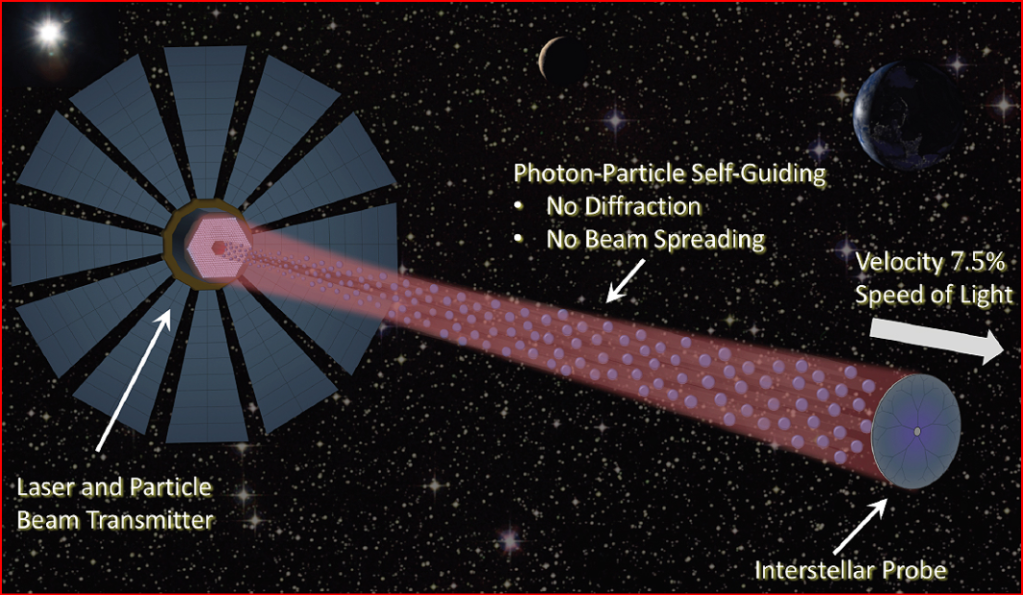
There are innumerable propulsion systems in development across the U.S. and Europe that can offer the speeds required for exoplanet colonization in reasonable timeframes.
The initial phase of this journey would be exploratory in nature to determine how viable Proxima B would be to sustain life, specifically human, animal, and plant life to eventually colonize the “New Earth” planet. But with these technological advancements come other questions and issues. How will we choose these intergalactic human space travelers? What qualities, backgrounds, skills, and talents will be needed to travel such long distances, one-way distances? How many human space-travelers should be aboard these spacecrafts?
It is very well-known that for a species to avoid extinction, biological and genetic diversity is a must. The first Proxima B colonists must be at least in the several hundreds if not thousands of human space-goers. The same applies for animals, plants, and microbes. And these missions will require several follow-up trips. We cannot expect to send 8.1 billion humans in two or three costly trips. This will undoubtedly raise many skills, experience, and moral questions such as: Who deserves to go and survive? Who deserves to stay on a dying planet like Earth?
Former NASA astronaut and 211-day ISS resident, Mike Barratt, says that these first, second, and third generation Proxima B colonists will have to be proficient in English and Russian languages. There’s the very first hurdle: American and Russian relations. The next hurdle is selecting the choice explorers, the choice pioneers, and then the choice colonists. Almost all astrophysicists and botanists explain that these initial generations will be critical to colonizing any New Earth exoplanet and sustaining life.
How many intergalactic human travelers will be needed to start life on Proxima B? The answer to that question becomes merely genetic and biological. If there is not enough genetic variation among the first generations of Proxima B crews, their odds of surviving the hazards of interstellar space and a new planet are drastically reduced. Does this mean we must hand pick our BEST human travelers with the BEST genetic and biological qualities? In doing so does this pose a moral bias, an unnatural selection of “better humans” over lesser, disadvantaged humans?
Population geneticist, Dr. Brandie Smith, states that in order for the human species to have a decent chance of survival and sustained life on an alien New Earth planet, they must be among a large, random selection of a highly varied genetic human population. The issue in this selection process is that humans do not know which genes and DNA to select for colonizing an alien planet, its environment and climate, and its resources which need to be used and consumed. Human specimens seen as “the best” here on Earth may not be suitable for a largely unknown exoplanet 4.2 light years away with completely different environmental factors and forces. Hence, the first generations to Proxima B must be in the upper hundreds or thousands to achieve genetic diversity. Protecting their bodies in the hostile environs of deep space will also be paramount. Radiation exposure is a continual, nemesising threat to deep space travelers along with extreme temperatures and very long spells of zero gravity.
At the NASA Johnson Space Center in Houston, Texas, every American astronaut returning from a long stay in the ISS is studied extensively for many months for the effects of zero gravity and any radiation exposure on the human body. In order to counter the negative effects of weightlessness on the human body, ISS crews are required to exercise a minimum of 2.5 hours daily—jogging, lifting, and pushing the cardiovascular system to safe levels so that muscle and bone mass loss are minimized. But even this regular routine is not enough when they return to Earth.
Landing on a distant planet after some 20-years in interstellar travel in their weakened, fragile condition, Proxima B colonists would struggle immensely to construct anything, let alone a new human civilization. ISS astronauts and cosmonauts who have been in zero gravity over 100–200 days return to Earth with the physical coordination and balance of a young 2-3 year old toddler. It takes at least 5-months for them to recover to 85% to 90% of their normal adult physiology; 6-8 months to return to 100% functionality.
Supplies to Last During Travel & On A New Earth
Food and life support systems would also have to safely last the long duration in deep space travel. That is an enormous engineering and supply nightmare, even for just 40-50 travelers, let alone 1,000+ astronauts and cosmonauts. As mentioned earlier, prolonged radiation exposure to human DNA leads to lethal cancers and birth defects to eventual Proxima B babies. How do human space travelers avoid deadly radiation and pack enough supplies, for 1,000+ space-farers, for 20–23 years in hostile interstellar travel?
Dutch pharmacologist Robert Henning, who has worked closely with the European Space Agency for the last several years, believes he has found the answer to deep space human hibernation that would save on the massive volume of food and supplies (and weight), and also protect human astronauts and cosmonauts from lethal radiation exposure: hydrogen sulfide.
Like the marmot, the arctic ground squirrel, the brown bear, and the dwarf lemur, these mammals and many more all hibernate to survive months of frigid winter conditions. This cuts back on their energy consumption during months of severe food scarcity. The breathing slows, as well as the heartbeat, and the metabolic rate all reduce by as much as 98%. Needed oxygen during non-winter months is replaced by hydrogen sulfide. Henning admits that H2S is not as efficient as oxygen, but he uses a similar chemical to put human cells into hibernation. What’s more exceptional is that when Henning exposes these hibernating human cells to lethal doses of radiation the DNA is unchanged, undamaged. His compound can safeguard the Proxima B crews from crippling and deadly cancerous radiation. Two more exceptional benefits of deep space hibernation are 1) the significant reduction of psychological stressors of long-term isolation in confined quarters and 2) mitigating the aging process of conscious travel over extreme distances.
However, new solutions to unknown complicated problems are rarely failproof over repeated attempts or journeys. There are and will be, hopefully minimal, unexpected consequences. Yet, historically with any explorations into unchartered, potentially hazardous frontiers, when was “failproof” guaranteed?
Robert Henning also acknowledges that even though he has the chemical compound to put human deep space travelers into hibernation, he does not have a solution to bringing them out of it and when to do so. NASA and the ESA have yet to devise a reliable solution either. However, there has been recent studies and findings by astrobiologists and biomedical engineers utilizing a wearable ultrasound transducer. From Associate Professor Hong Chen and research associate Yaoheng (Mack) Yang, both at Washington University St. Louis’ (MO) School of Engineering and School of Medicine respectively, describe their non-invasive technique:
“We developed an automatic closed-loop feedback controller to achieve long-duration and stable ultrasound-induced hypothermia and hypometabolism by controlling of the ultrasound output,” Chen said. “The closed-loop feedback controller set the desired body temperature to be lower than 34C [93.2F], which was previously reported as critical for natural torpor in mice. This feedback-controlled UIH kept the mouse body temperature at 32.95C [91.31F] for about 24 hours and recovered to normal temperature after ultrasound was off.”
— hong chen, Induction of a torpor-like state with ultrasound, mckelvey school of engineering, may 2023
Although we predict that Proxima B will have similar Earth-like conditions such as a breathable atmosphere, rocky planet (minerals and other natural resources), liquid water both on the surface and underground, slightly more gravitational pull or weight due to its mass, the exoplanet will not be identical to Earth. Proxima B will have many unknown challenges for long-term survival there.
What if Proxima B does not have an atmosphere—oxygen, carbon, hydrogen, nitrogen, and sulfur—to support human habitation or in bulk—nitrogen, phosphorous, potassium as must have elements, then calcium, magnesium, and sulfur as secondary elements—to grow healthy plants? These seven elements are critical to human and vegetation to promote and sustain life. If there are none of these elements or very little of them in the atmosphere, then what are the alternatives?
In Oracle, Arizona, at Biosphere 2, a totally self-contained, University of Arizona research lab facility to quantify the devastation and consequences of human-caused Climate Change on Earth as well as what might be possible to grow on distant exoplanets, they may have some answers. Here in enclosed domes scientists experiment and ask What can be done on/in an unsuitable, non-Earth hostile atmosphere? Since 1986 they have been compiling results of their totally sealed environment—from Earth’s currently poor, deteriorating conditions—to determine what could be constructed, maintained, and expanded on a planet like Proxima B.
Under the seven glass biodomes are an ocean/sea, a mangrove wetland, a tropical rainforest, a Savannah grassland, and a fog desert. These recreated ecosystems demand an enormous amount of engineering and heavy manmade materials for their proper climates and long-term survival. Obviously, the colossal scale to make and support these biome ecosystems would be impossible to transport 4.2 light years away, or further, in an interstellar spaceship with very limited cargo space and 1,000+ crewmembers. Ah, but there is a highly industrious, foraging, building insect species here on Earth that just might be the initial solution to this monumental exoplanet challenge.
At the Kennedy Space Center in Florida, senior technology engineer Rob Mueller has developed a probable solution to large scale exoplanet biome construction: swarmies. Or another description would be swarming ants.
Mueller’s team at NASA have developed stand-alone, robotic ant-like, foraging hunters in the form of small 4-wheeled rovers, hundreds and hundreds of them. These swarmies carry lifting-claws and mineral sensors to excavate necessary resources to mine then build a basic first-stage colony for later arriving space crews. Once building materials have been identified by the swarmies their digital white pebbles and bread-crumb trail (Hansel & Gretel) is transmitted to the excavating machines called RASSOR’s. These larger mining machines collect the exoplanet’s natural resources (e.g. regolith) to be converted into bricks, mortar, rebar, polymer rope, many materials that can be used to build early stage biomes, living quarters, supply warehouses, et al.
Mueller’s team have also developed a fully automated, stand-alone production/assembly line for our own Moon, Mars, and Proxima B when these raw materials are brought by the RASSOR’s for final manufacturing. By utilizing the mineral resources already present on the exoplanets, costs in weight, fuel, building supplies and materials for intergalactic space travel-colonization to Proxima B and beyond is drastically cut and minimized. Shipping all of these cargos from Earth or even our Moon would be prohibitive and unrealistic.
The ideas and imaginations of going to and building another human, animal, and plant-sustained civilization on a New Earth are no longer fantasies of science-fiction. These are not just achievable, they are now obtainable. But we are quickly running out of time, “time” to save some humans and remnants of this deteriorating, dying planet caused by human activity and many decades of lethargic negligence. Our survival is in the stars, not here.
If We Don’t Outlaw Climate Change Pollutants
For the next 10–50 years the human race, as a whole, MUST act and act aggressively right away. If not as a collective species, then at minimum every single 1st-world and stable 2nd-world nation must act as one! The bad health and condition of our planet is much, much worse than previously forecasted in the 1970’s, 80’s, or 90’s.
In addition to our fast shrinking polar icecaps, melting glaciers, warming oceans, more extreme weather events, and unstable atmosphere—to name only five frequently occurring events—one example of the fast decaying health of Earth is currently close to home for me: the Gulf of Mexico.
Since at least 2018 the Mississippi River Watershed has been washing enormous amounts of man-made nutrients into the Gulf of Mexico, particularly high amounts of nitrogen and phosphorus. These exorbitant amounts of nitrogen and phosphorus and other chemicals come from increased heavy rains and melting snow over lawns, farmlands, sewage treatment plants, chemical refineries, and other sources into all the Mississippi River’s tributaries, then into the Mississippi and finally into the Gulf of Mexico.
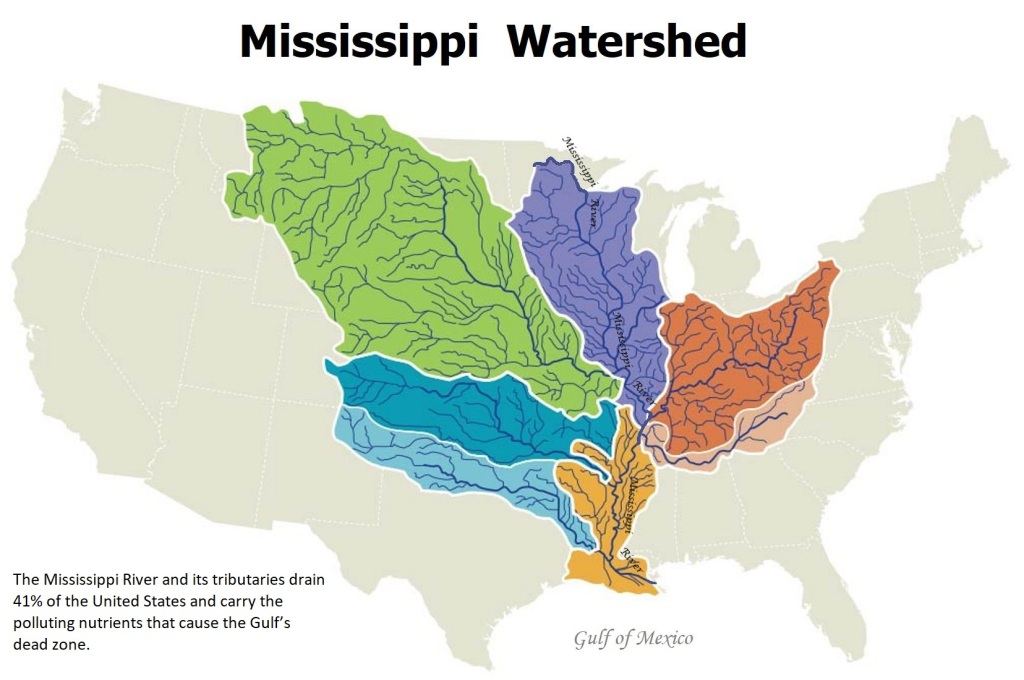
When these man-made nutrient pollutants empty into the Gulf, they trigger algae blooms that choke off oxygen in water making it very difficult, if not impossible, for marine life to survive. The impact has a negative domino effect on other ecosystems and industries. Read this report from The Nature Conservancy for more details on these severe impacts.
“NOAA is forecasting an above-average summer “dead zone” in the Gulf of Mexico covering approximately 5,827 square miles — an area roughly the size of Connecticut. The dead zone, or hypoxic area, is an area of low oxygen that can kill fish and other marine life. It occurs every summer and is primarily a result of excess nutrient pollution from human activities in cities and farm areas throughout the Mississippi-Atchafalaya watershed. The average dead zone measurement is 5,205 square miles over the 37-year period of record.”
— national oceanic atmospheric administration, “NOAA forecasts above-average summer ‘dead zone’ in Gulf of Mexico” – june 13, 2024
Examine this 37-year data collection of the Gulf’s Dead Zone Hypoxia Area below. Then imagine the 2024 forecast (5,827 sq miles) in the first image and at the far right, second image:
Humans, people of Earth, it is way beyond time to halt being indifferent, apathetic, self-arrogant or intentionally ignorant of what we have been doing to our one and only planet for over 50-years, technically though since 1800 and the Industrial Revolution.
Here is a short quiz: List everything humans have done the last two centuries to curb, to slow, to stop consuming/using Climate Change pollutants. List everything even in the last century or half century. What significant actions or deterrents have we, our governments, our corporations, and privately at home done that has slowed catastrophic, extinction causing climate events? Did you use two hands? One hand to name them all? Have all the well-known extreme weather events and consequences of them, e.g. hurricanes, typhoons, flooding, droughts, bigger tornadoes, animal and plant extinctions, extreme temperatures, famine, plagues, pandemics, etc., have they decreased or reversed the last 100- or even 50-years?
It does not take a genius or even an intelligent person to fully realize and admit that what humans have been doing daily the last two centuries, especially since the end of World War II, and continue to not do… is nowhere near enough. And denying or going about business as usual, day in and day out as if nothing is happening or has happened… is NOT working. In fact, the planet is much, much worse than it was in 1760, 1830, 1945, 1990, or even 2000. Wake up world, or your habitat, your own kitchen and pantry, your very existence will soon be completely destroyed. Stop the negligence and outlaw climate change pollutants. Now.
Then, get on our collective horses and giddy up, and find fast a New Earth. At this current rate the clock is at 11:54pm and will not stop ticking until 12:01am. The end of Earth. Is there honestly another alternative? Can we happy(?) boiling frogs get ourselves out of the saucepan we keep inflaming hotter and hotter?
Further reading:
Antartica Ice Sheet — Researchers Have New Melting Concerns
Death Valley Heat — Could Temps Break New Records?
More Records Broken — Daily, Monthly Records Shattered
Live Smart – Love Much – Laugh Often – Learn Always

The Professor’s Convatorium © 2023 by Professor Taboo is licensed under CC BY-NC-ND 4.0

